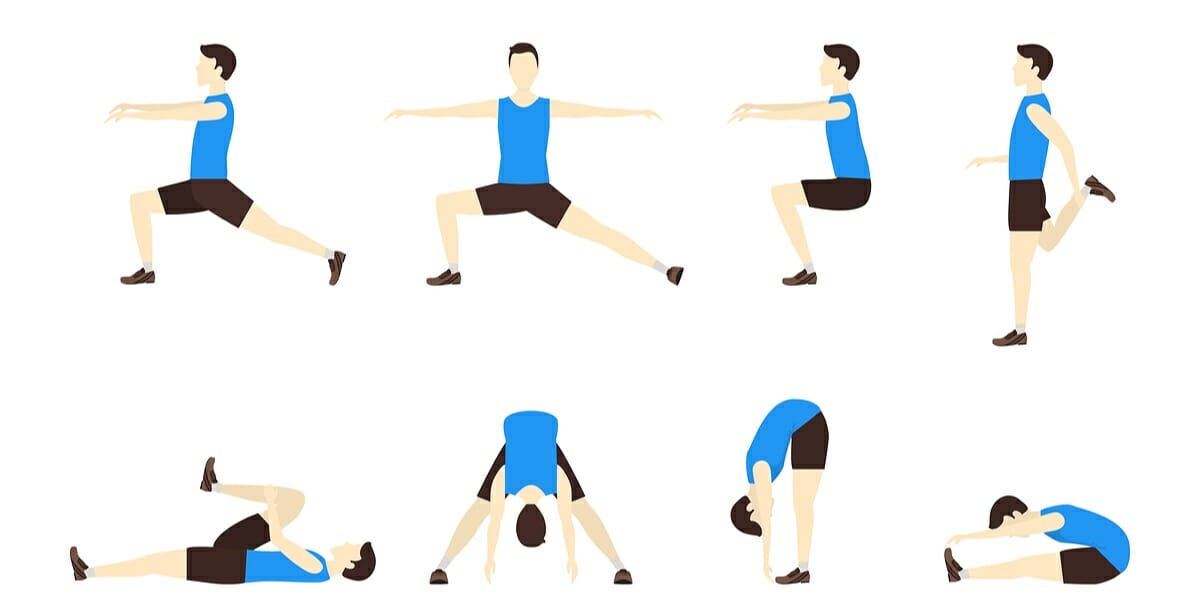While stretching is a key tool to increasing flexibility and ranges of motion, knowing the techniques and different types of stretching can help you choose the proper type at the proper time. This will also help you prevent injuries and take your performance and function to another level. There many types of stretching, and two of the most common are active and passive stretching.
Active Stretching
In active stretching, you are not using an external force to create the stretch. Rather, you are using a group of your own muscles to create the stretch. Therefore, you would not need a partner to help you or any other tool.
There are many pros to active stretching. It usually safer to perform than passive stretching, as it has much less chance of over stretching. It is also effective when you have been sedentary for an extended period of time. For example, if you have been sitting at your desk for hours and you start to feel stiffness in your calf, it is wiser to use active stretching by flexing your shin rather than passively stretching a cold inactive muscle.

Passive Stretching
On the other hand, in passive stretching there is always an external force facilitating the stretch. This force can be provided by a partner, using gravity, or even using an assistive tool (such as a yoga strap or yoga block)The muscles that are getting stretched are relaxed in passive stretching.
Passive stretching can be performed to improve flexibility as it allows for an increase in range of motion. The best time to do passive stretching is when you want to cool a muscle down after a workout.

While both types of stretches can help achieving greater ranges of motion and more flexibility, remember that with passive stretching, it may be easier to overstretch. Ensure that your muscles are warmed up and active to get the most out of passive stretching. Reach out to your PhysioDNA team when you are in doubt about what stretches would suit you the most.
Written by: Dr. Ahmed Al-Hamdan

